TechRadar Verdict
For pro stills photographers who are already invested in the Nikon system, the Nikon D6 is a powerful, reliable workhorse of a camera. It's naturally overkill for most amateur snappers, but if you have a large chunk of cash burning a hole in your pocket, it’s a fantastic option for several reasons. Wildlife and sports shooters who already own a cupboard full of Nikon lenses, for example, will likely be tempted by its tracking autofocus performance. But it’s not without its foibles, with Live View focusing and video being particular let downs, while its Canon and Sony rivals edge it in key areas.
Pros
- +
Super-fast AF
- +
Lots of control dials and buttons
- +
Touch-sensitive screen
Cons
- -
Live view focusing not great
- -
Overkill for most photographers
- -
Expensive
Why you can trust TechRadar
Sitting at the very top of Nikon’s camera line-up, the Nikon D6 is its flagship professional camera. It’s expensive, big, and bulky. The D6 is also total overkill for the average enthusiast, but it’s arguably a wise purchase for anybody with a big budget who likes to photograph wildlife, sport or other moving subjects.
Built around the same 20.8MP full-frame sensor as its predecessor, the Nikon D5, the D6 in many respects is an incremental upgrade. It brings with it some decent updates, including an improved autofocus system, better processor, compatibility with CFExpress cards and inbuilt Wi-Fi.
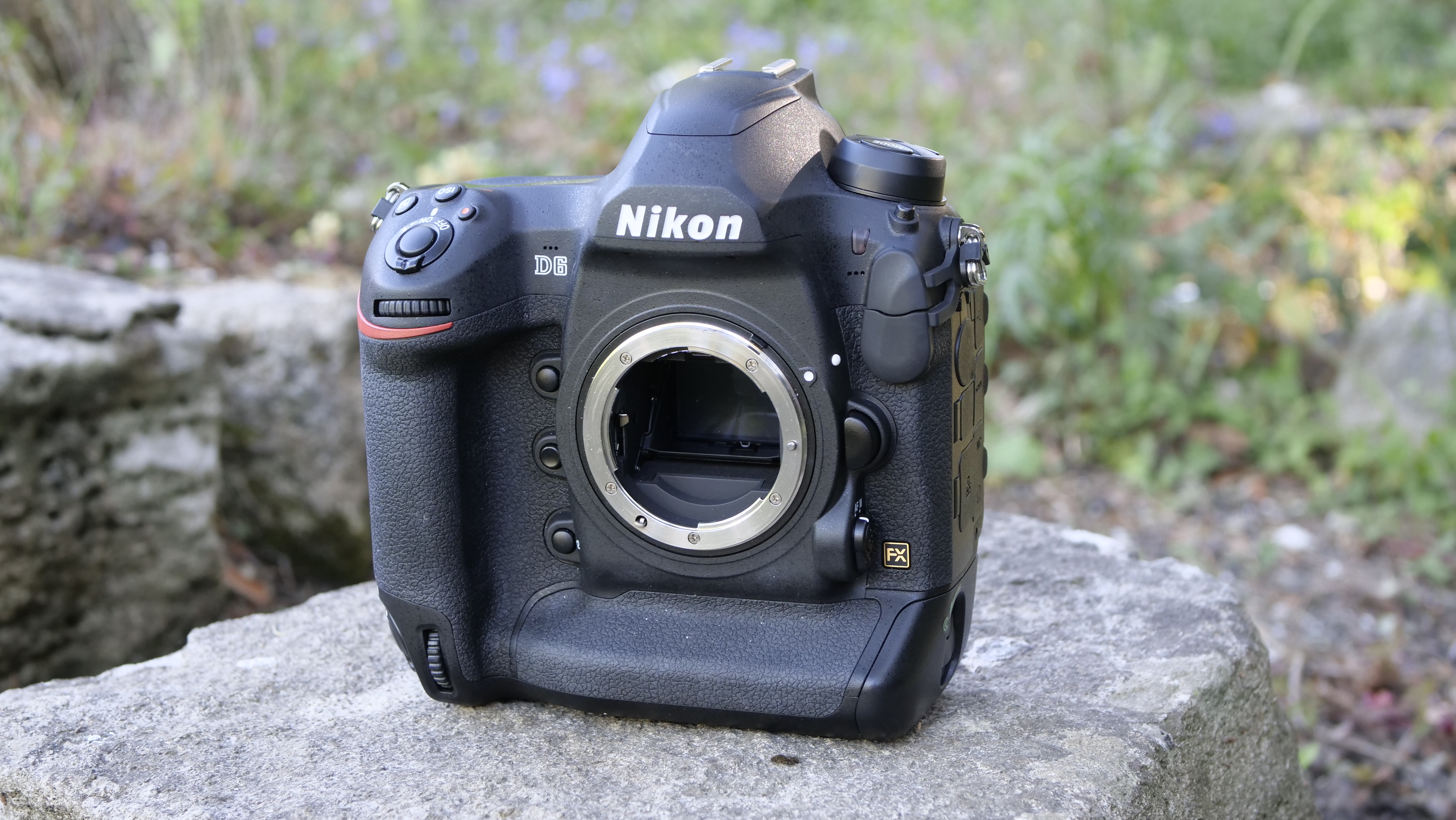
Price and release date
Design and handling
Features
Performance
Image and video quality
Should I buy it?
Individually, a lot of these upgrades might feel a little underwhelming, but together they make for a decent overhaul. They're also all housed in a body that is built like a tank and designed to withstand pretty much anything you’ll throw at it.
That said, the camera world is a very different place from when the D5 was launched. Now, mirrorless technology is outdoing DSLRs in almost every way. You can get faster frame rates and equally impressive autofocusing elsewhere – in smaller and cheaper packages.
That might not make any difference to you if you’ve got an existing supply of Nikon-fit DSLR lenses, but if you’re considering switching systems anyway, dropping a hefty wad of cash on a DSLR like this might feel like a backwards choice in many respects.
While the D6 performs well when it comes to autofocus and tracking, and provides excellent still images, where it falls down is with Live View focusing, and therefore, video performance is also somewhat lacking. If you’re looking for a fantastic all-rounder that you can use for everything – as you might expect for the price – this is not really it.
Getting a lot of things right when it comes to the handling, the D6 is in many ways a joy to use. There are direct control buttons for pretty much every setting, while triple screens give you an instant display of exactly how you’ve set up the camera.
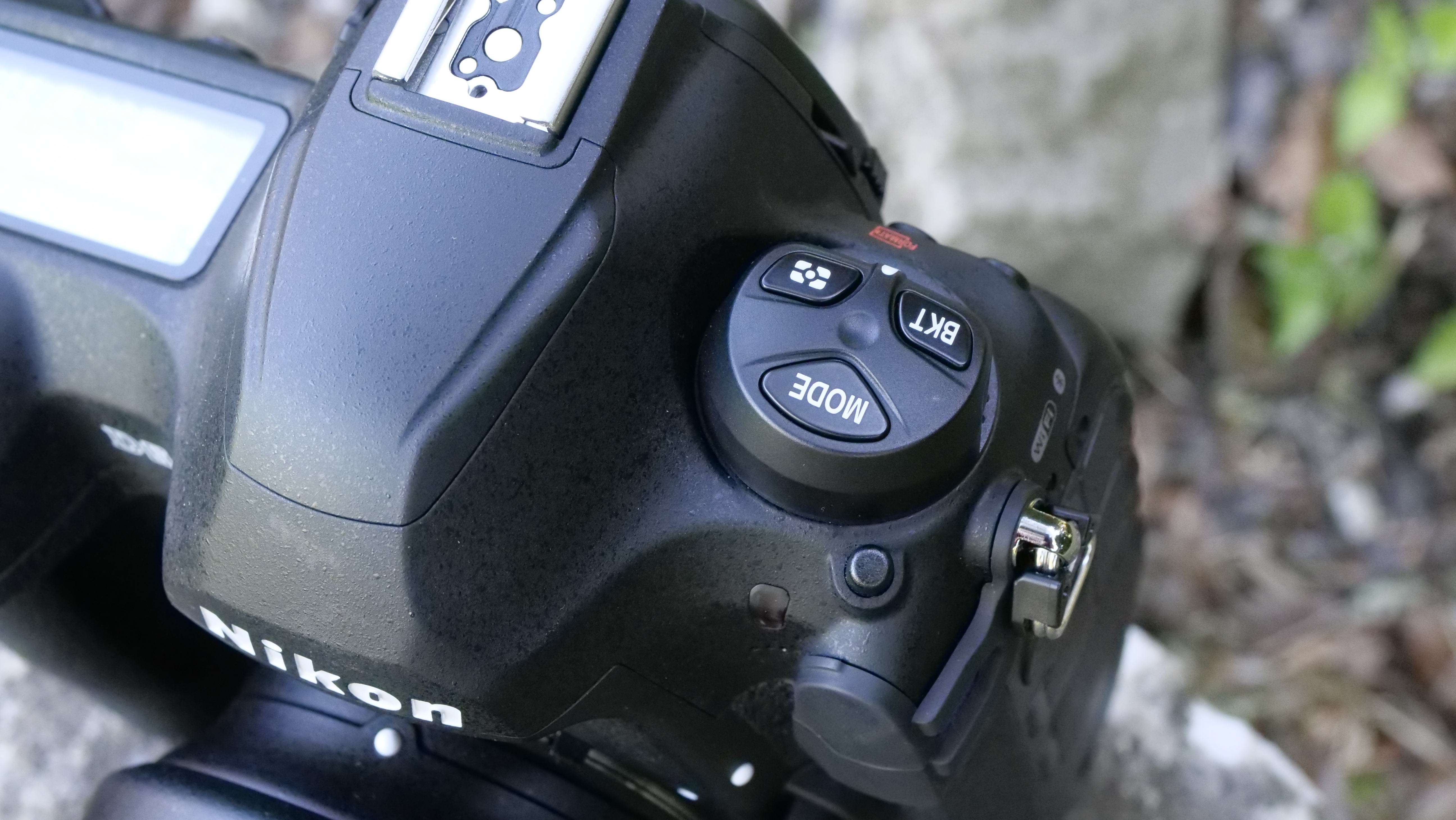
Yes, it’s heavy and bulky, but you sure as hell feel like a 'real' photographer when you’re using it. And when it comes to battery life, you won’t be charging this up every five minutes (slight exaggeration) like you would do with a mirrorless equivalent.
All in all, this is a camera that you might lust over and read all about, but never buy. If you’re super serious about wildlife, sport and action photography it’s worthy of your consideration, but otherwise it’s probably best left to the pros. And we think the Canon EOS 1DX Mark III and Sony Alpha A9 II are better bets for the latter.
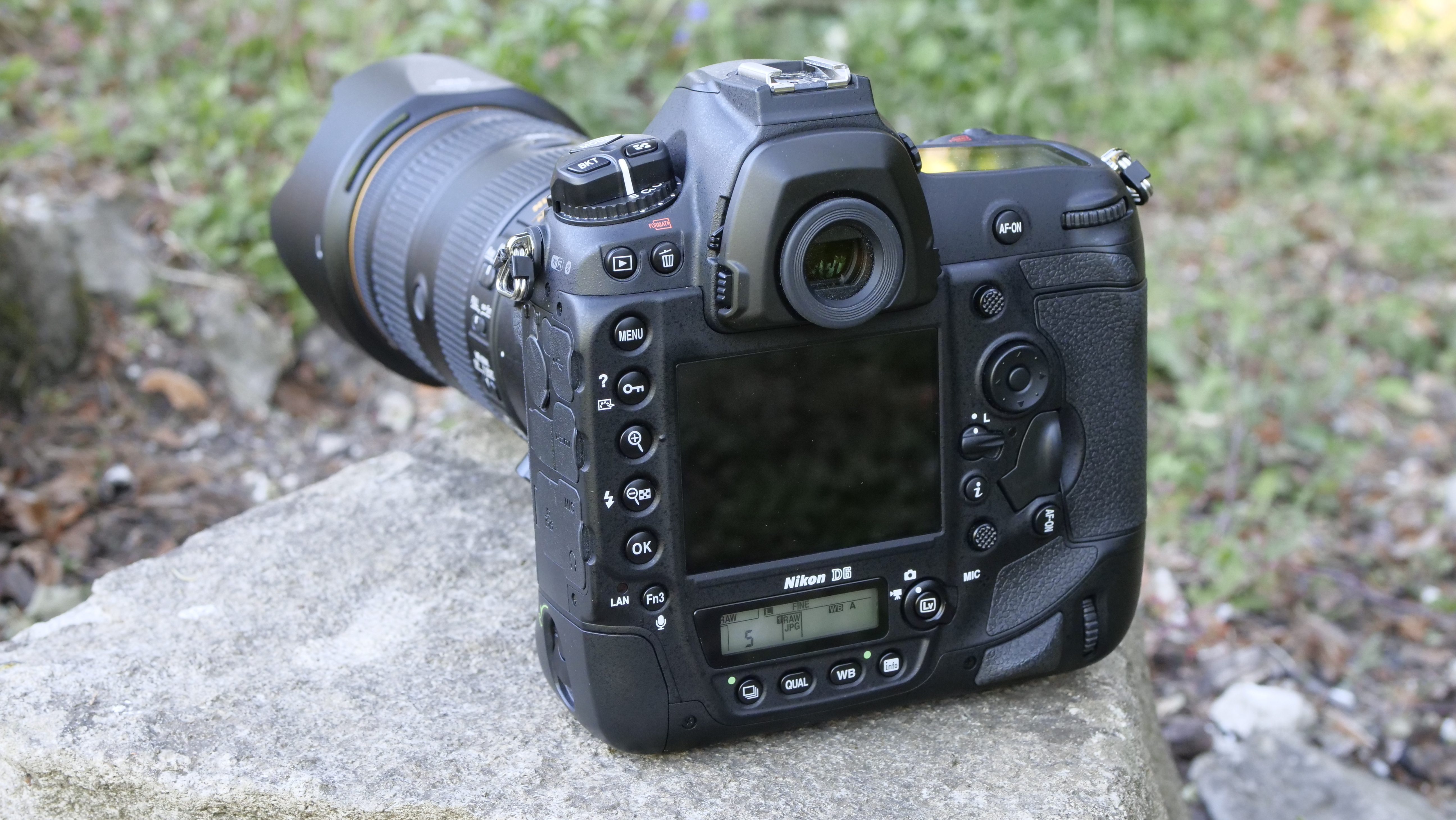
Nikon D6 price and release date
- Development announced in September 2019
- Released in May 2020
- £6,299 / US $6,496 / AU $10,378 body only
The Nikon D6 was announced as being in development back in September 2019, with the full specifications announced in February 2020. After some pandemic-related delays, the Nikon D6 release date was finally set as May 21, 2020.
As a camera that's aimed very squarely at professional photographers – and perhaps the odd well-heeled enthusiast – this is not a camera that comes cheap. The Nikon D6 price at time of writing is £6,299 / US$6,496 / AU$10,378, and that’s body-only.
It seems pretty unlikely that those completely new to DSLRs will be looking towards a D6 as their first purchase, but you may need to factor in lens prices if you are considering it.
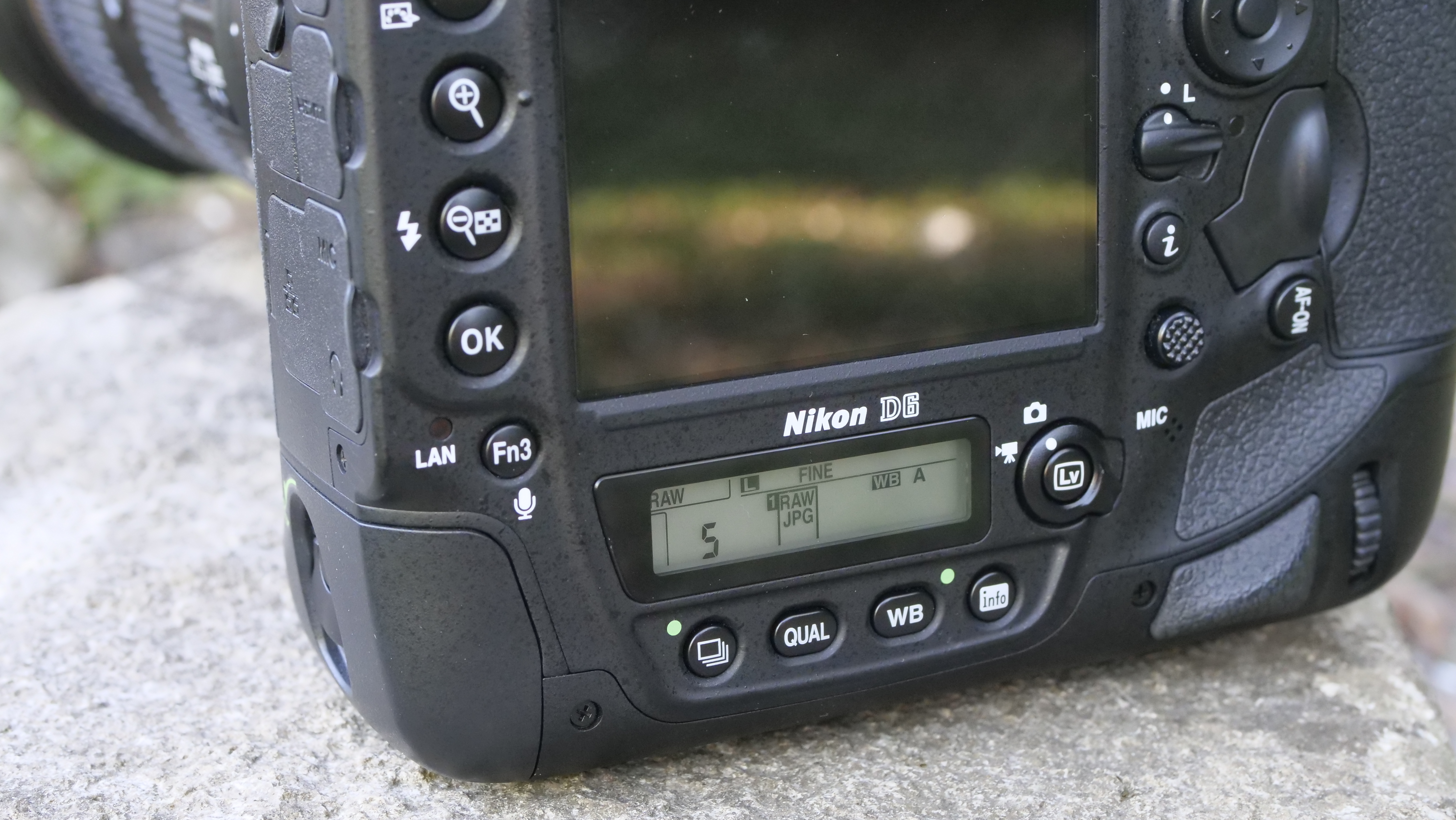
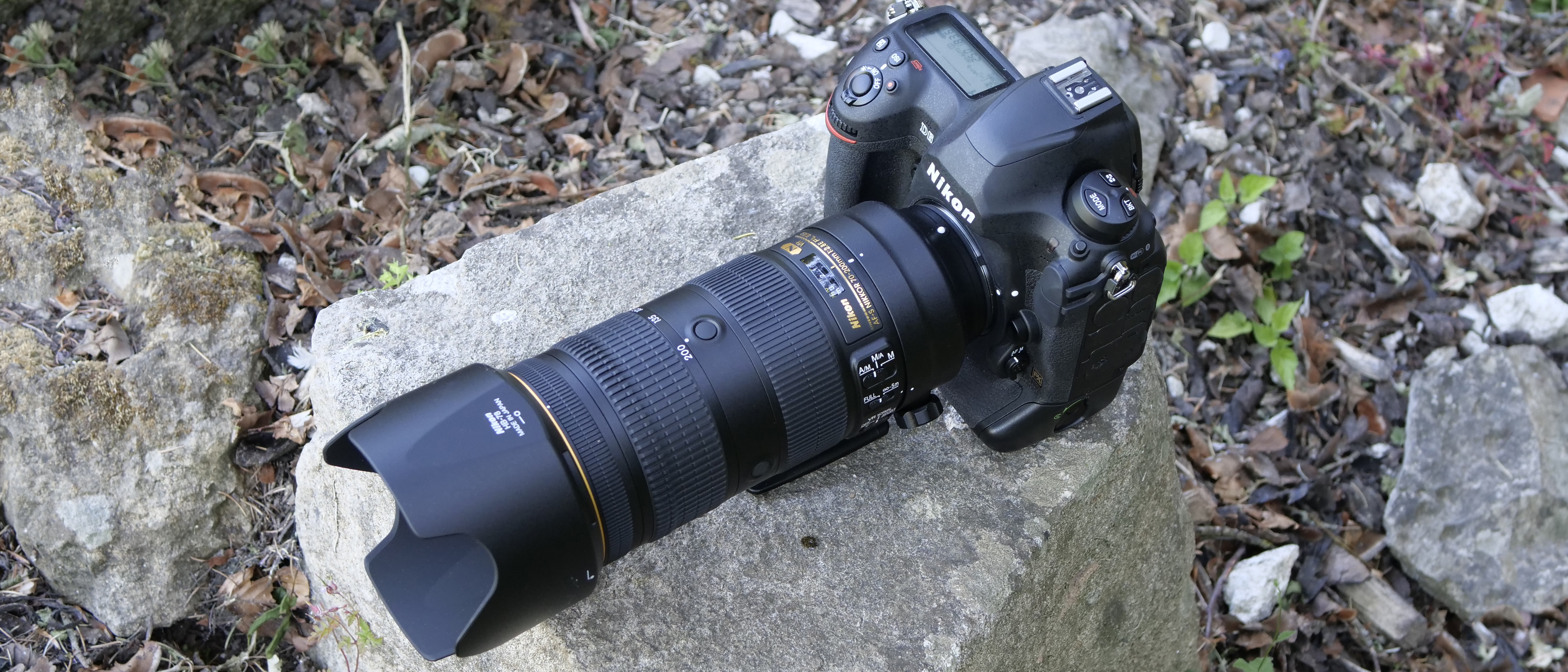
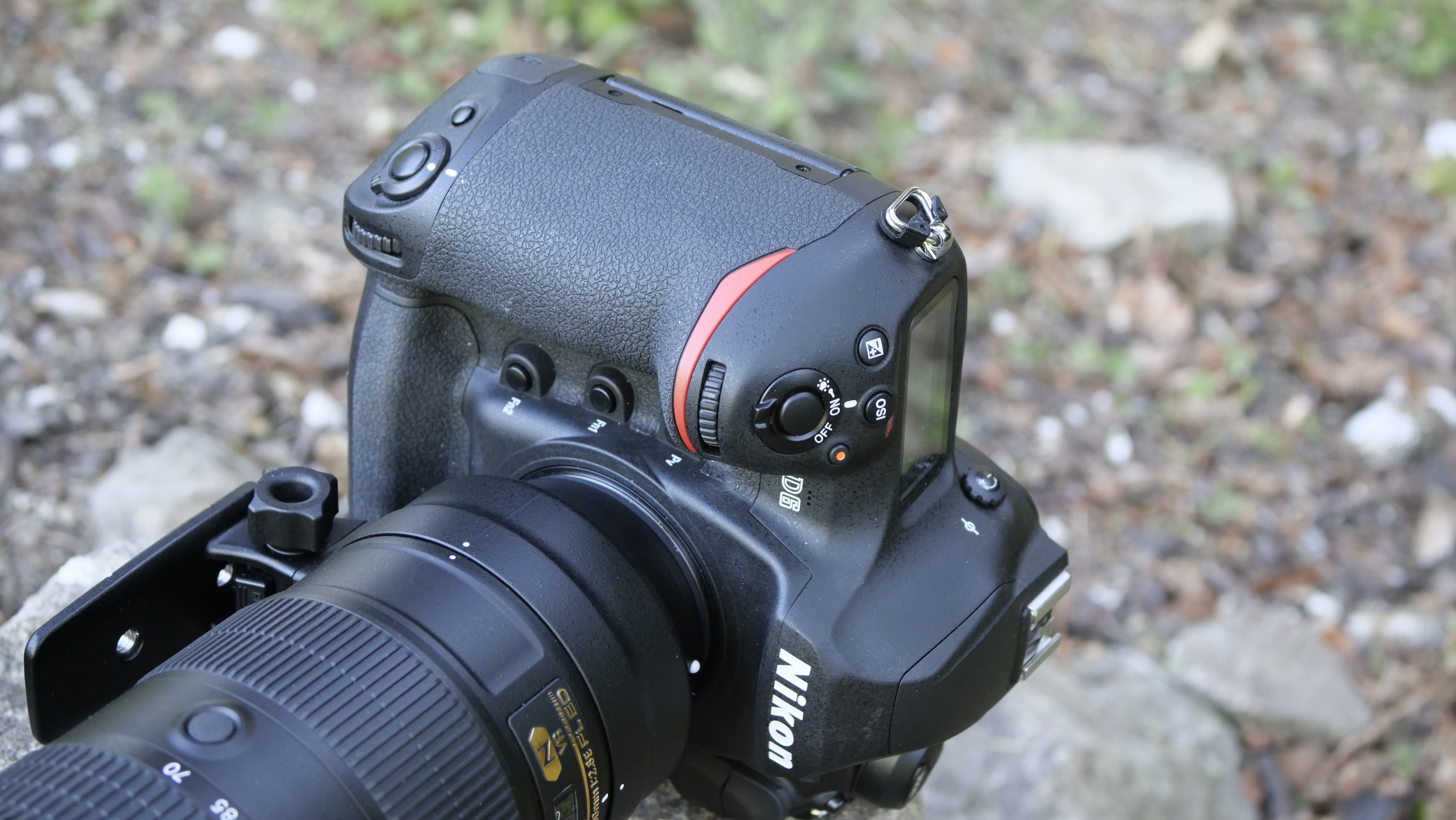
Design and handling
- Large, bulky body with lots of dials and buttons
- Three screens for checking settings
- Familiar setup for anyone already using a D5
There’s no getting around it – the Nikon D6 is a big, solid beast of a camera. That’s not a bad thing, per se, but it’s certainly not something you’re going to consider as a travel or everyday camera. Having so much body available means you’ve got a vast array of buttons to give you quick access to everything you could ever want to change – and you’ve also got a second set of basic controls on the vertical grip, making it easier to shoot portrait format images too.
This is not a camera that you can expect to use with just one hand, but most of the buttons and dials you’ll need to make common changes, such as to aperture or shutter speed, are found on the right-hand side. This gives you the scope to make quick changes with your right thumb and forefinger, while the other buttons are generally used for more in-depth changes, or for image review.
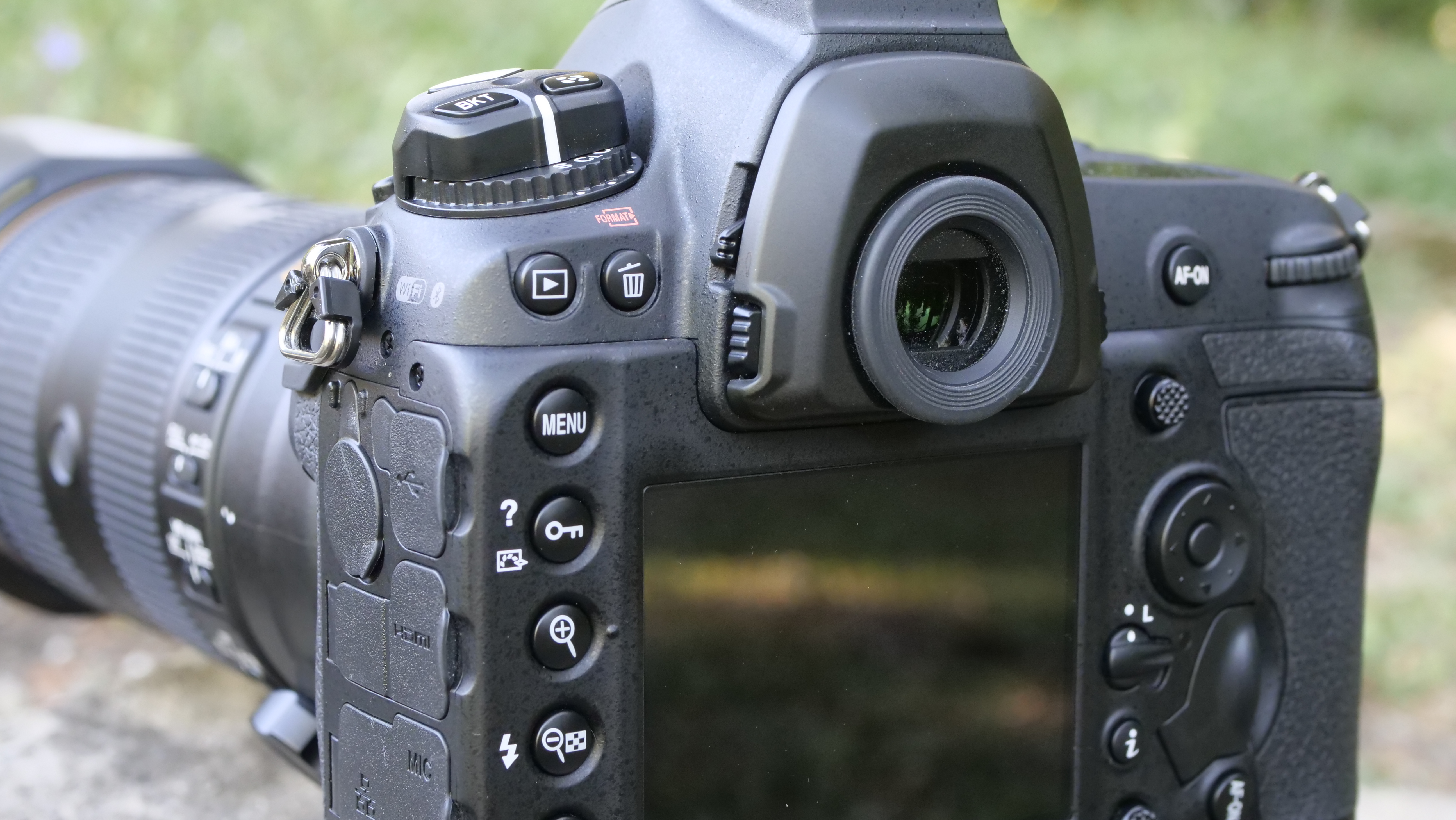
Also on the left-hand side, on the top plate of the camera, is a raised area with buttons for changing the shooting mode, adjusting the bracketing mode and choosing a metering mode. There’s also a dial for choosing the drive mode – moving from single shooting, through the continuous shooting options and the 'quiet' mode.
Not only is there an abundance of buttons, there’s also a plethora of screens. Of course there’s the main screen (which is touch-sensitive), but there’s also a top plate LCD screen and a secondary small LCD screen just underneath the main screen. These secondary screens display key settings information and are great for quickly establishing how you’ve got the camera set up when you need to know at a glance.
One of the best things about the D6 is the fact that it is so similar, in build, shape and handling, to its D5 predecessor. If you’re a professional (or very keen enthusiast) touting two of these monsters, switching between the two is easy and swift, which can make the difference between getting a shot and not.
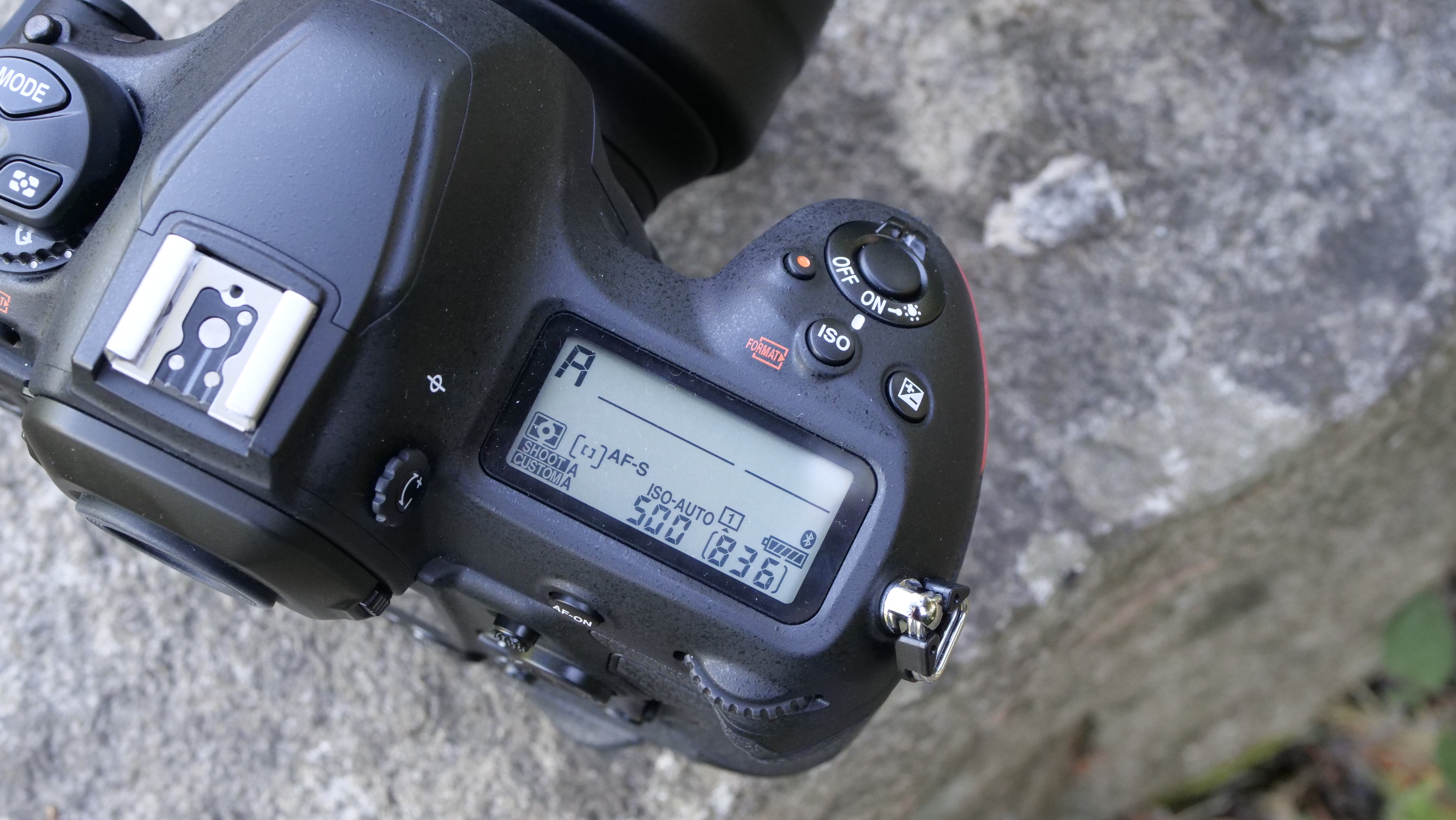
Features
- Evolution of the D5, rather than complete revolution
- Upgrades to AF system, processor memory card compatibility
- Now boosts built-in Wi-Fi
As is often the case with very high-end cameras, the D6 is more of an evolution of an existing model, with some interesting and useful tweaks, rather than being a full-scale revolution.
For starters, the D6 is built around the same sensor as the D5 – so you get a 20.8MP full-frame sensor. If you’re thinking that resolution doesn’t sound huge compared to some of Nikon’s other cameras, then it's worth considering who this camera is aimed at.
Many professionals consider this kind of pixel count to be somewhat of a 'sweet spot' - it offers a high enough resolution to enable a reasonable degree of cropping, while also keeping file sizes at a sensible size, and performing well in low light. If you’re a sports photographer sending back dozens of images to the news desk, you don’t want the giant, bill-board sized images that cameras like the Nikon D850 will give you.
While the sensor has stayed the same, the D6's processor has been improved, which gives a boost to performance elsewhere. Another of the new improvements comes to focusing speed and frame rates – both excellent news for action, wildlife and sports photographers.

The D6 offers 14 frames per second shooting – that’s an improvement of 2fps over its predecessor. The D6 now offers a 105-point, all cross-type focusing system. There’s also Eye AF in 3D Tracking and Auto Area AF modes. In fact, AF is definitely the strong point of the D6, with a huge amount of customization available in the main menu for those that want to dive down into the exact setup they require.
Another improvement is the addition of Wi-Fi and GPS built-in to the D6. This is something that required an additional external module for the D5, but is something that those working on the road might consider a necessity. While an enthusiast might be happy to wait until they got home to share those shots, in an age of sharing online as quickly as possible to social media feeds, it’s a decent boost for every kind of shooter.
Support for CFExpress memory cards is another new feature that is likely to be a boon to the serious photographer. The D6 has two slots which can either take XQD cards or CFExpress cards – the latter being faster and therefore appealing to pros who need to get the quickest shots. It’s also useful to have a faster card when transferring your shots onto a computer or secondary device.
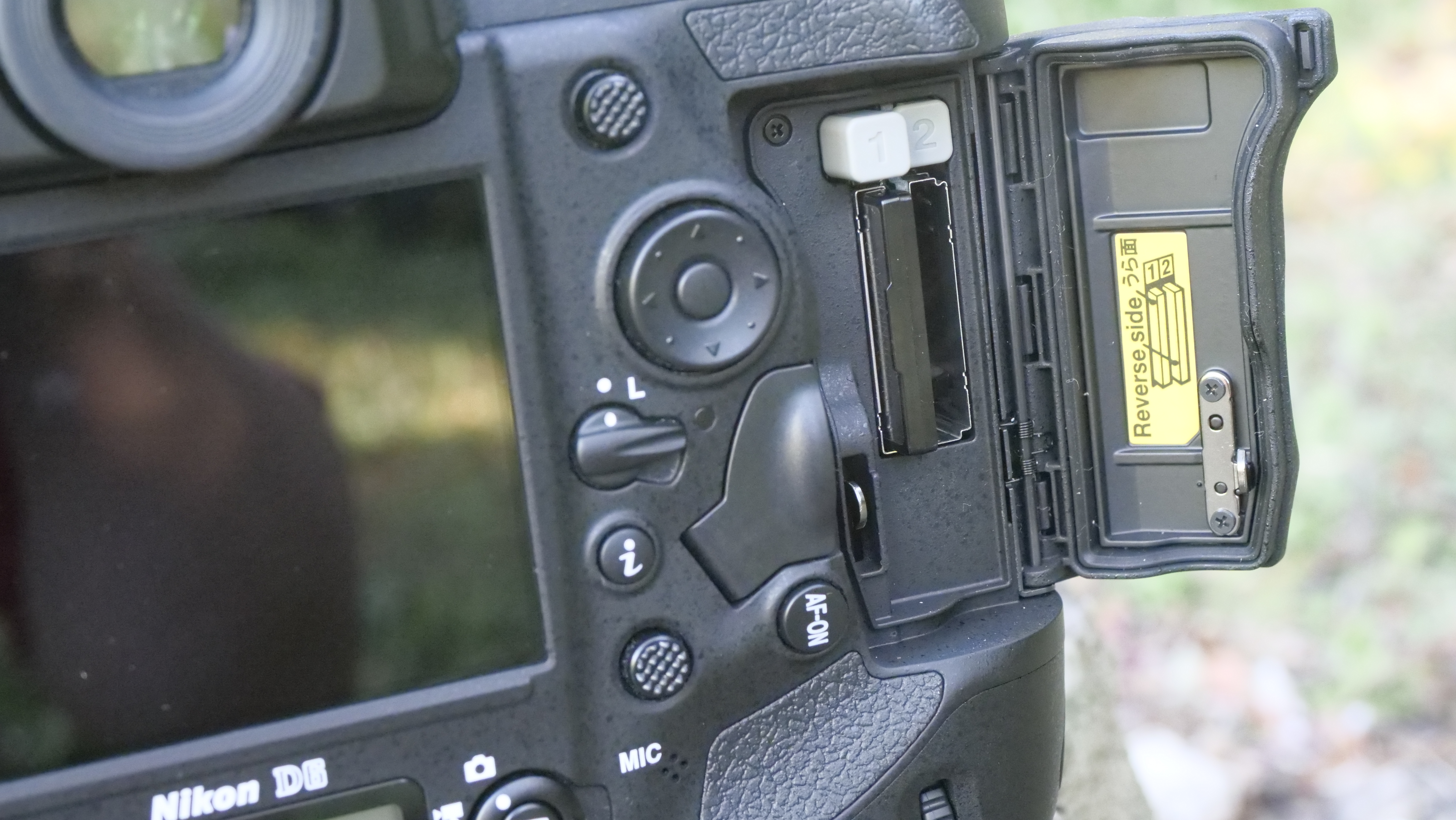
Performance
- Improved autofocus performance, particularly for tracking
- Lots of customization available
- Eye AF works well
Focusing was already excellent with the D5, but there has been a good improvement here on the D6. Although the D6 is obviously aimed at professionals, there’s certainly an argument that advanced enthusiasts with a particular penchant for subjects like wildlife should consider it (budget permitting, of course).
Focus acquisition and subject tracking has been improved, particularly with the extensive customization options available to help you set the D6 up exactly to your preference. If you’re a wildlife or sports photographer – particularly one who prefers a DSLR setup to a mirrorless one – then it’s a fantastic option for those with hefty budget available.
Eye focus in auto area AF and 3D tracking is very good too – which is helpful for those who photograph human subjects. Wildlife photographers might be less enamored with it as it doesn’t work with animal eyes – hopefully this is something Nikon will address with a future firmware update, just as Sony has done in the past.

While frame-rate has been boosted to 14fps, that’s still not on par with the capabilities of some mirrorless cameras. Models such as the Sony A9 II can deliver 20fps – the limitations of having to move a mirror out of the way are coming into play here.
One other area which is still sadly lacking is focusing when shooting in Live View. When you compare the D6 against its mirrorless rivals, it is painfully slow. The only real advantage to shooting with Live View is the option to shoot silently, something which can be useful in a number of situations. The D6 may be a camera which is primarily intended for viewfinder shooting, but it’s a shame to see it fall behind the speedy performance of the Canon EOS 1DX Mark III, which boasts Dual Pixel CMOS autofocusing when working in Live View.
Having an Expeed 6 processor gives the D6 a usability speed boost when compared to the D5, though you’re more likely to notice a big difference if you’ve been using an even older model like the D4S. Moving through images in playback is very fast, as is applying in-camera edits to Raw format images.
Image and video quality
Because the D6 uses the same sensor as its predecessor, but pairs it with a better processor, we had no doubt that image quality would be very good.
Sticking with what might seem like a relatively low pixel count does the D6 a favor in maintaining low-light performance. This will make it particularly appealing to professional photographers, as well as those using it for subjects like wildlife, where conditions may be on the dim side.
JPEGs directly from the camera show a good degree of brightness and vibrancy, while keeping noise to a minimum. The all-purpose metering setting does a very good job of producing balanced exposures in the majority of shooting conditions, while the automatic white balance setting keeps colors on the right side of accurate most of the time.

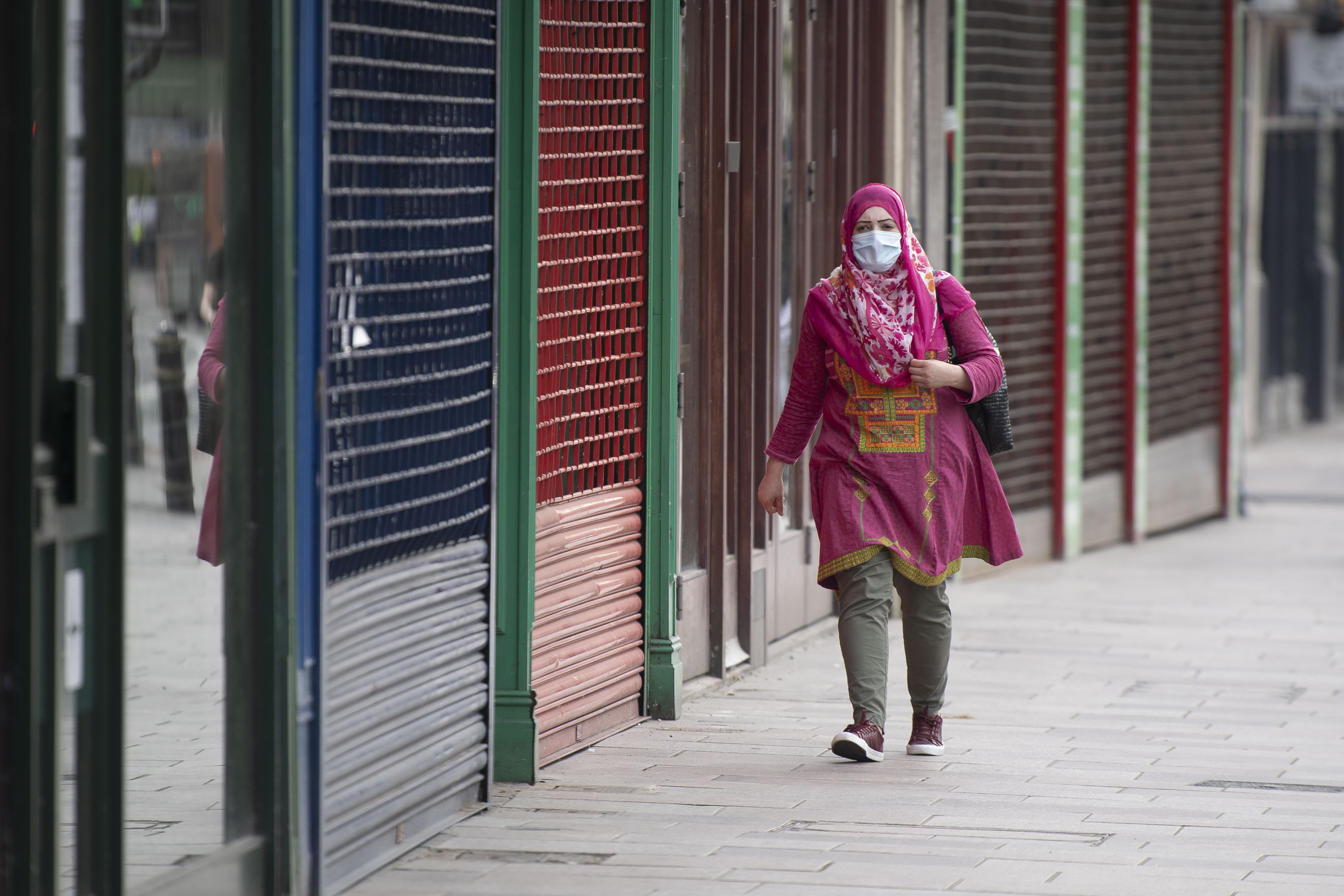
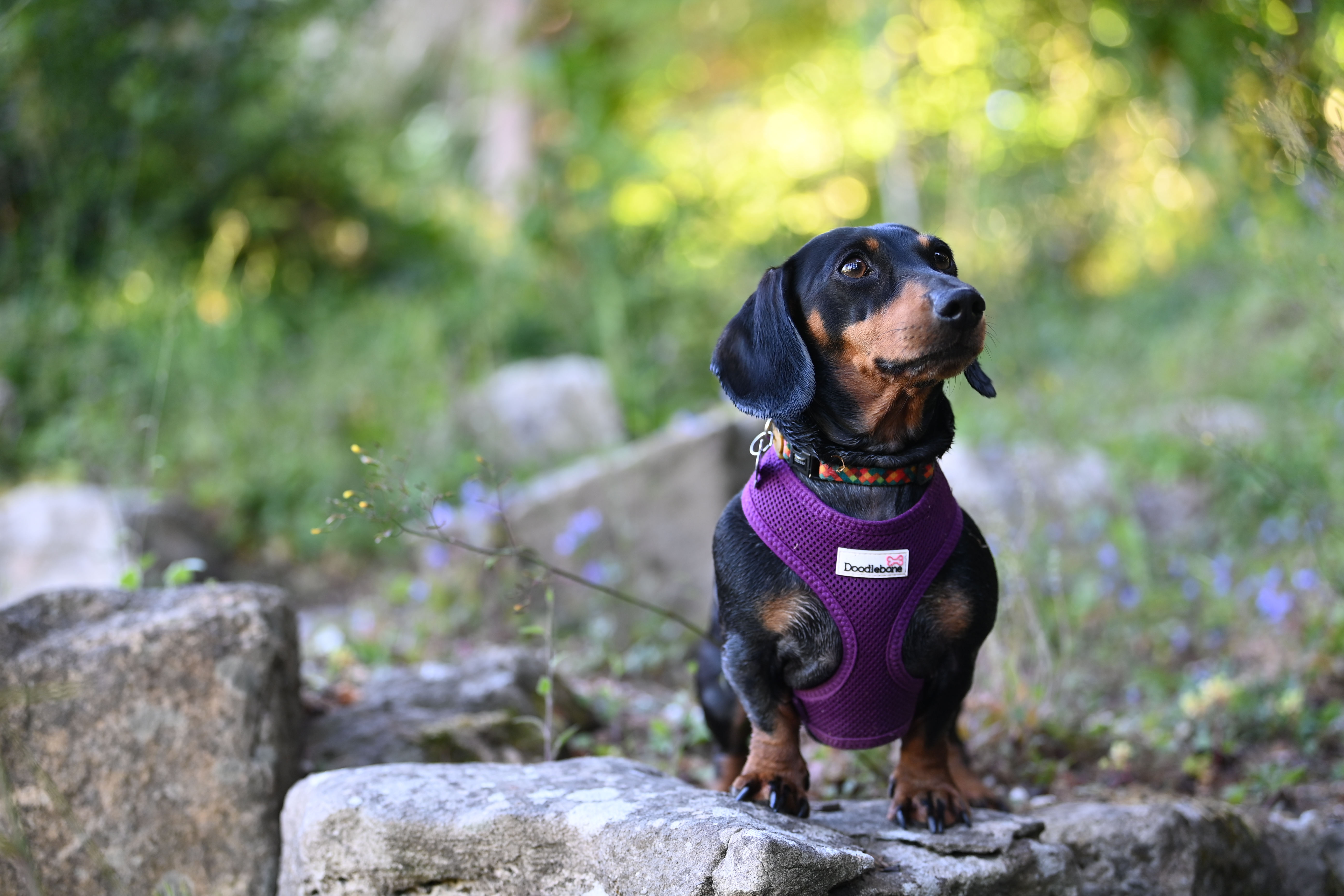

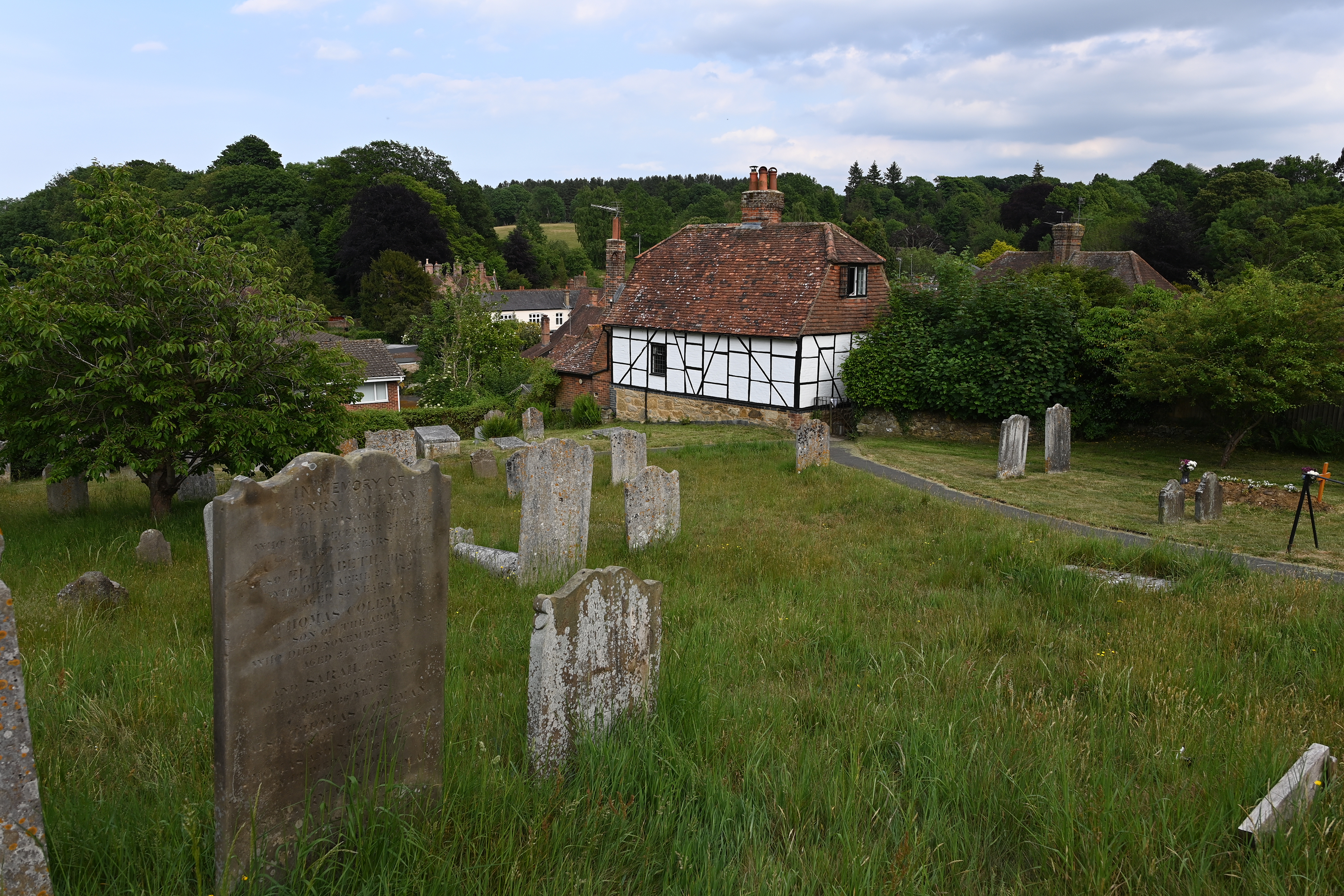
On the whole, despite being a lower resolution sensor than some others on the market, deal is very well rendered. At very high ISOs, detail can be a little smudgy, which is where the very malleable Raw format images come into play. We wouldn’t expect somebody who is shelling out the asking price of the D6 to only shoot in JPEG, but they are useful for sharing quickly online while out on a shoot and so forth.
Video quality is good should you be filming something relatively simple and static. However, thanks to the slow and erratic Live View focusing, it’s not a camera that can be particularly recommended for videographers.
Should I buy the Nikon D6?
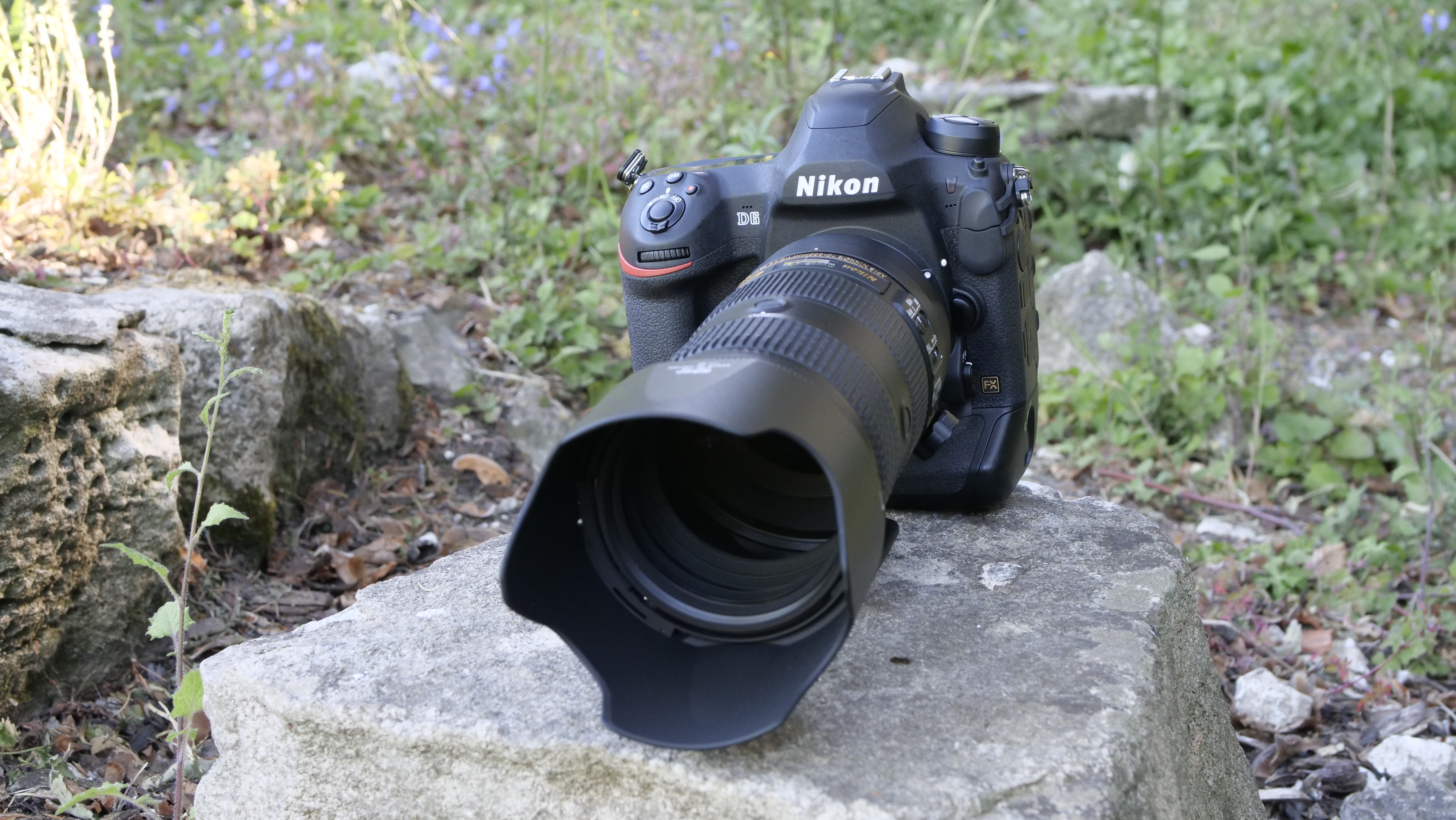
Buy it if...
You’ve got a stack of Nikon DSLR lenses and are a very keen wildlife or sports photographer
There will be plenty of photographers who have a cupboard full of glass that they’re not willing to part with just yet – while the mirrorless revolution is doing a good job of convincing plenty of people to switch, factoring in replacing all your glass can actually make the expensive D6 the cheaper option.
You prefer the build and handling of a traditional DSLR over mirrorless
Say what you like about some of the shortcomings of DSLR – namely the top frame rate and poor Live View focusing – there will still be many people out there who just prefer using and handling a DSLR. That’s especially true of a camera like this with its multiple dials and buttons just begging to be pressed.
You’re already toting a D5 or a D4S
What’s better than one mega-expensive, mega-bulky professional-level camera? Why, two of course! If you’re already the proud owner of a Nikon D5 or a Nikon D4S and are looking to add a second model to your arsenal – this could be the one for you.
Don't buy it if...
You like to shoot video, frequently
Although the D6 is capable of recording 4K video, the speed of focusing precludes it from being the ideal candidate for videography. At its price and size, it’s also complete overkill for the average videographer, too.
You think you could be swayed by mirrorless models
Although the D6 is a fantastic, high-performing camera, mirrorless models outperform it in a number of ways. If you’re a less dyed-in-the-wool DSLR owner, then turn your attention to something like the Sony A9 II to get the latest technology.
You don’t have a giant budget
This one’s a bit of an obvious one, but the Nikon D6 is a professional-level camera with a professional price tag to match. The average photographer almost certainly does not need one and would be better off investing the money in a less powerful body and a few lenses.
First reviewed: May 2020
Amy has been writing about cameras, photography and associated tech since 2009. Amy was once part of the photography testing team for Future Publishing working across TechRadar, Digital Camera, PhotoPlus, N Photo and Photography Week. For her photography, she has won awards and has been exhibited. She often partakes in unusual projects - including one intense year where she used a different camera every single day. Amy is currently the Features Editor at Amateur Photographer magazine, and in her increasingly little spare time works across a number of high-profile publications including Wired, Stuff, Digital Camera World, Expert Reviews, and just a little off-tangent, PetsRadar.

